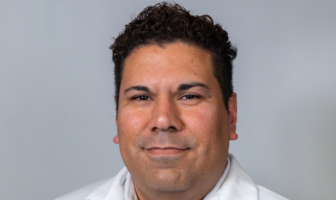Dr. Marc Kundler shares everything you need to know about how PTSD affects women.
Sponsored Content
Dr. Marc Kundler is a board-certified psychiatrist, has been in practice for more than 20 years and is the medical director at Rock Springs behavioral hospital. He and his wife, Maria, have four children. At Rock Springs, the mission is changing people’s lives by delivering state-of-the-art, evidence-based treatment and compassionate care to those who are struggling with mental-health and/or substance-use issues. Rock Springs offers inpatient services, partial hospitalization, intensive outpatient programs and medication management for adults 18 years of age and older at its Georgetown, Texas, location, as well as partial-day programs for children and adolescents ages 8 to 17 at its Changes location in Cedar Park, Texas. Rock Springs also has a specialty program and unit designed exclusively for active-duty service members, veterans and first responders called Help for Heroes.

What is post-traumatic stress disorder?
Post-traumatic stress disorder is a psychiatric condition consisting
of symptoms that significantly disrupt a person’s life in response to a particularly traumatic event. The most common symptoms are depression and anxiety, flashbacks of the traumatic event, avoidance of further relationships or intimacy, and becoming uncontrollably agitated or scared. These symptoms can appear immediately after the event or not appear until years later. Flashbacks are not just remembering the event but actually reliving it over and again. Also, not every one of these symptoms is necessary to have the diagnosis.
Why is PTSD important in Women?
Initially, PTSD was thought to be a disease only occurring in soldiers with horrible war experiences. However, the most common diagnosis now is a result of physical or sexual abuse. Tragically, it is only necessary to read the news any day of the week to begin to realize how commonly women are abused in this country. An estimated 50 percent of all women will experience some type of abuse or stalking during their lives in the United States, and the incidence is even greater in many third-world countries. It is now widely recognized that women are being abused in epidemic proportions worldwide.
Typically, how are the lives of women with PTSD disrupted?
The simple answer is completely: an inability to enjoy any aspect of their lives, difficulty holding a job and caring for their family, being homebound and terrified of most any social interaction. Women can experience profound sadness and anxiety throughout most days and often have episodes of dissociation in which the woman completely blacks out and cannot remember large parts of the day. It is also common for a woman with PTSD to have thoughts of suicide. Current statistics show approximately 15 percent of people diagnosed with PTSD will die by way of suicide.
Is there hope for women with PTSD?
Yes, there is most definitely hope. As more women come to treatment, we have a better understanding of what works in relieving these symptoms and putting folks on the road to living a normal life. A combination of medication and psychotherapy that is focused on PTSD has been shown to be very effective and help the patient put the abuse in the background over time and become more able to live a normal life. Many of the most severe cases require hospitalization. However, the majority of patients are successfully treated in offices and clinics and can remain at home.
What is the first step in seeking treatment?
It is most important that women or men who are experiencing difficulties in their lives from past or present abuse seek treatment from a medical professional. The first step can be confiding what is happening to a primary-care provider, friend, spouse or other family member or seeking help within the mental-health community. Similar to almost all medical problems, the sooner one comes to treatment, the more can be done. But even people who struggle with these symptoms for decades can be helped. It is never too late.
For more information, visit rockspringshospital.com.



